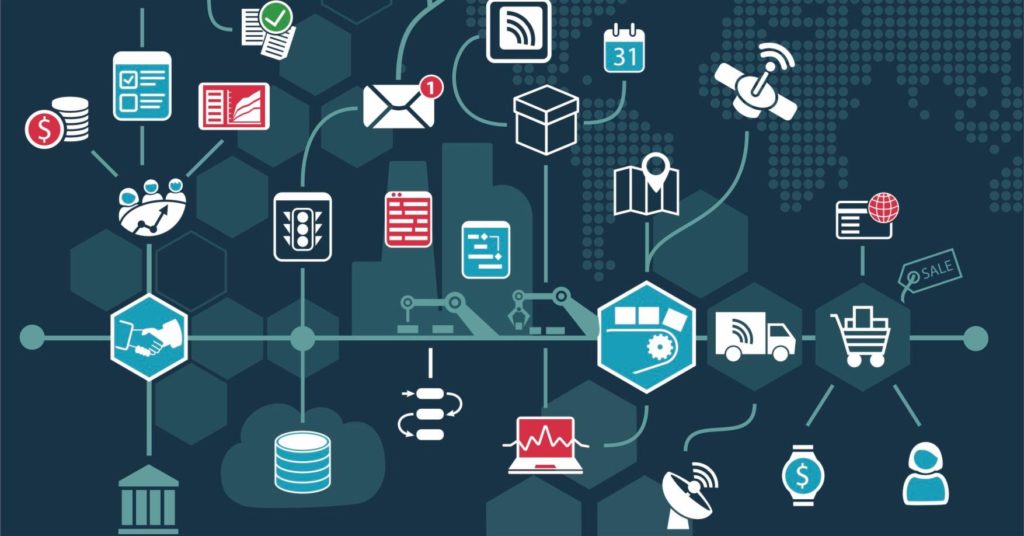Marketing technology is supposed to make marketing simpler and more efficient. With the right marketing technology strategy and tools, small-to-midsize businesses (SMBs) can compete with larger companies. But with the average enterprise company employing 91 different pieces of software in their marketing stacks, it’s overwhelming for smaller businesses to figure out where to begin.
One of our favorite marketing technologies for SMBs is marketing automation software. This software streamlines marketing, sales, and customer service interactions into automated processes. It makes marketing more efficient and—contrary to what “automation” suggests—more personal.
If used correctly, marketing automation software can make small business marketers feel like a well-funded, enterprise-level marketing department. In this article, we’ll cover some basics of marketing automation to get you started.
Making Marketing More Effective
Broadly speaking, marketing’s job was traditionally focused on filling and nurturing the top of the sales funnel, encouraging prospects to convert. In the past, marketers relied on email blast after email blast sent to lists of hundreds or thousands of (probably purchased) prospects. Today, the way customers search, educate themselves, find suppliers, and make purchase decisions has fundamentally changed the marketing landscape.
The good news is that marketing’s efforts are now primarily focused on filling the top of the sales funnel and moving those prospects down the funnel to become a marketing qualified lead—thus giving sales a better probability of converting that prospect to a sale.
With the help of marketing automation, it’s easier to develop personalized campaigns and content targeted to meet buyer’s needs at each phase of their search. Working in concert with your Customer Relationship Management (CRM) system, marketing automation connects the behavior of your prospects and customers to more targeted and relevant content for each stage of the sales funnel.
Improving the Customer Life Cycle
With marketing automation, marketing departments can focus on more than leads; they can help foster great customer relationships by improving the entire customer lifecycle, from prospect to acquired customer and beyond. Some companies do this with automated welcome emails. For example, a project management software company might use marketing automation to push welcome emails that encourage product adoption. When customers sign up for a free software version on the company’s website, they receive a welcome email that provides a tour and a video walk through.
 This type of email automation helps companies in software and many other sectors quickly respond to customer actions and create customized paths of experiences that push them down the funnel. For software companies, product adoption during free trials is a key indicator of whether free customers will become paying customers.
This type of email automation helps companies in software and many other sectors quickly respond to customer actions and create customized paths of experiences that push them down the funnel. For software companies, product adoption during free trials is a key indicator of whether free customers will become paying customers.
A welcome email is just one example of how companies use automated marketing. Anytime customers interact with your website is an opportunity to employ marketing automation to nurture prospects. Other examples include:
- Abandoned shopping carts prompting an email with discounts to encourage a customer to reconsider
- A white paper download prompting an invitation to attend a webinar
- A video view prompting an email that shares additional targeted content like a case study
By using marketing automation to connect customer actions with your company’s content, marketers make the most out of every company–customer interaction.
The Challenges and ROI of Automated Marketing Technology
Smaller business marketers are often hesitant to devote resources to implementing marketing automation—and understandably so. To be done effectively, marketing automation requires significant changes in marketing departments or the outsourced resources to help implement the technology effectively.
According to Ascend2’s Marketing Technology ROI Report, 59% of marketers cite budget availability as a challenge, while 44% cite forecasting ROI and 43% cite integration requirements as barriers to using marketing technology. On top of that, most respondents say that such technology solutions will take 4-6 months before achieving ROI.
Despite the challenges and slower time to ROI, the effects of marketing automation far outweigh the initial bumps and learning curves. The most commonly cited reason for using marketing automation is to increase leads. Indeed, research shows that it can boost the number of qualified leads by a whopping 451% (Annuitas Group).
But marketing automation has many benefits beyond lead generation. Companies employ marketing automation to:
- Align sales and marketing
- Automate customer onboarding and retention
- Measure marketing’s impact
- Understand the digital behavior of buyers and customers
Each of these activities, in their own ways, can help SMBs do more with less. And when you’re working with finite resources, the added support of the right automation tools can make a world of difference.
Stay tuned for more resources on marketing automation. In the meantime, we’d love to talk to you about how marketing automation and a solid marketing platform can help you achieve your business objectives—get in touch today.

